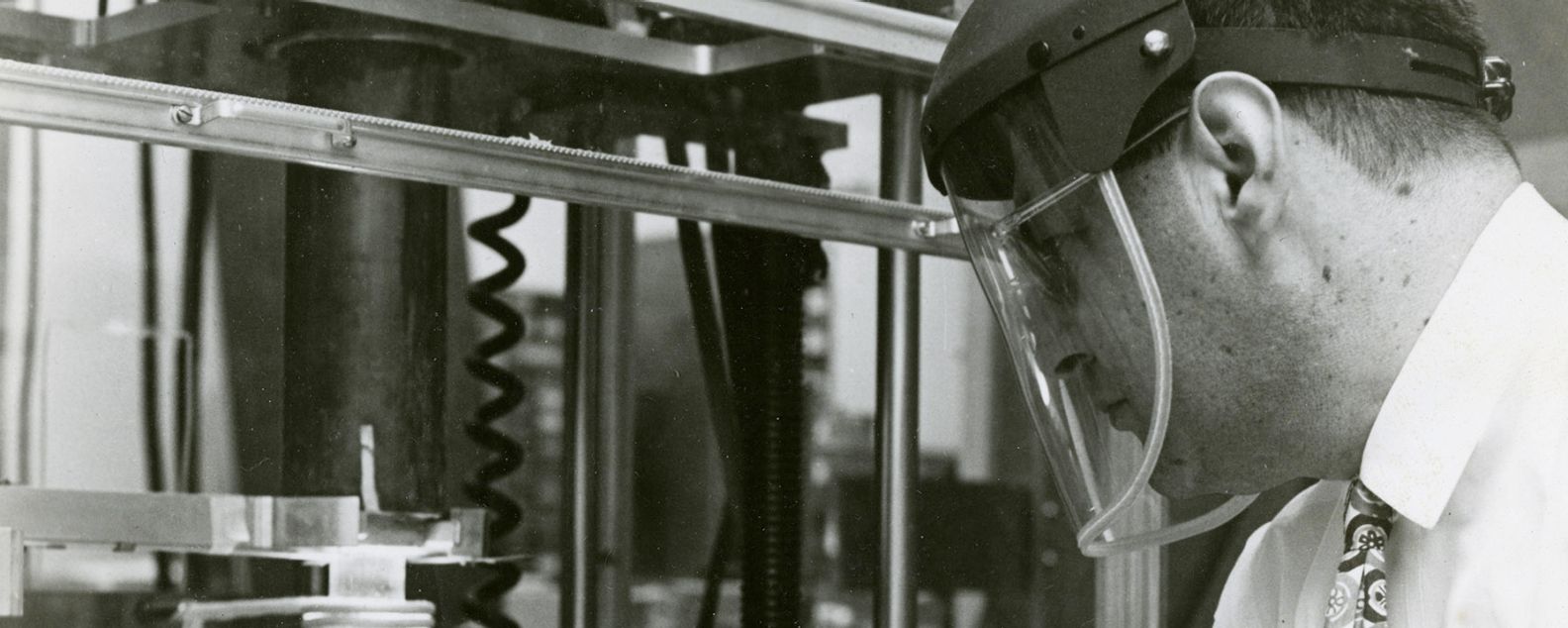About cookies on this site Our websites require some cookies to function properly (required). In addition, other cookies may be used with your consent to analyze site usage, improve the user experience and for advertising. For more information, please review your options. By visiting our website, you agree to our processing of information as described in IBM’sprivacy statement. To provide a smooth navigation, your cookie preferences will be shared across the IBM web domains listed here.
Excimer laser surgery (LASIK)
IBM’s breakthrough in ablative photodecomposition revolutionized the field of laser surgery

On November 27, 1981, Rangaswamy Srinivasan brought his Thanksgiving leftovers with him to work at IBM Research. The manager of fundamental photochemical research and his colleagues, James Wynne and Samuel Blum, selected a piece of cartilage from a turkey leg, carefully prepped it to satisfy experimental conditions, and then shot it with a laser.
Thirty-two years later, President Barack Obama presented the IBM scientists with the National Medal of Technology and Innovation, the most prestigious award in the United States for technological achievement, for their work in laser-induced ablative photodecomposition — the technology behind LASIK vision correction and a host of other applications.
But the road from turkey leg to 20/20 vision wasn’t easy.
Heat without burning
When Srinivasan, Wynne and Blum began their experiments in ablative photodecomposition at IBM’s Thomas J. Watson Research Center, lasers were already being used to excise tissue and destroy unwanted masses such as kidney stones. These techniques were less invasive than conventional surgery, but they typically caused significant scarring. The lasers worked by burning away organic material, resulting in heat damage to the surrounding tissue.
In 1981, Srinivasan and Wynne discovered that controlled pulses from an excimer laser could remove an extremely thin layer of material from an organic surface without damaging the surrounding tissue. They knew they were onto something — but they needed to find the right material to experiment with for their discovery. “We talked about delicate tissue, like butterfly wings and goldfish tails,” Wynne later told an interviewer from the Optical Society of America.
They hadn’t settled on a type of tissue by the time they went home for the Thanksgiving holiday. That weekend, while at dinner with his family, Srinivasan realized he could use a turkey leg. The cartilage in the joint provided a smooth surface that was analogous to many human tissues, and it was uniform enough to make collateral damage relatively easy to detect.
The following week, Srinivasan and Wynne used an argon fluoride excimer laser to make an incision in the cartilage and then checked the surrounding area for burns. Finding none, they repeated the experiment with various frequencies and intensities of laser radiation, measuring how many pulses it took to make a cut and then examining the surrounding cartilage to see what damage the laser had done. “The answer to the final question was always none,” Wynne said. That’s when he knew they had discovered a new frontier in laser surgery.
Ablative photodecomposition
Srinivasan called their technique “ablative photodecomposition,” a name that referred to how laser pulses strip away layers of tissue. Previous methods of laser surgery relied on heat: an intense beam burned away surface tissue, scorching surrounding areas in the process. Ablative photodecomposition, on the other hand, used an ultraviolet laser to break up chemical bonds in organic molecules, dissolving a thin layer of tissue at a much lower temperature.
The success of the new method relied on convection, the physical principle by which warmer gases move away from cooler areas. The ultraviolet excimer laser created big differences in temperature across relatively short distances, so that vaporized tissue moved rapidly away from the surrounding area, taking excess heat with it. This convection prevented nearby tissue from burning. With its ultra-high precision and near-zero collateral damage, the excimer laser had the potential to replace the scalpel.
“Sri and I decided that we had to share our discovery with the medical and surgical community by entering into collaborations,” Wynne later explained. “We had the laser; the doctors had a wide variety of potential tissues for us to try it on.”
In 1983, the ophthalmic surgeon Stephen Trokel approached Srinivasan to discuss the possibility of using ablative photodecomposition to perform surgery on the cornea. Their collaboration eventually led to the development of laser-assisted in-situ keratomileusis, better known as LASIK.
LASIK and other forms of laser-refractive surgery revolutionized the field of vision correction, replacing risky and difficult scalpel-based forms of corneal surgery with a process that has become reliable and relatively inexpensive. More than 20 million patients have now undergone laser refractive surgery to correct their vision.
In 2013, Srinivasan and Wynne were presented with the National Medal of Technology and Innovation; Blum, who had passed away only a few weeks earlier at the age of 92, received the award posthumously. At the ceremony, Wynne’s daughter asked President Obama whether he knew anyone who had gotten laser eye surgery. “Yes, Michelle,” the president said, referring to First Lady Michelle Obama. She was one of millions of people worldwide whose lives were improved by Srinivasan’s decision to bring his leftovers to work.
Srinivasan retired in 1990 after a 30-year career at IBM. Wynne continues to work at Watson in Yorktown, where he is responsible for educational outreach. He is also conducting research into the use of excimer lasers as “smart scalpels” to remove scar tissue caused by burns.
Related stories
Smart application of technology and a steadfast commitment to improving the lives of people
IBM pioneered exploration of the nanoscale, leading to breakthroughs from computing and biotech to climate science and AI
IBM has always provided its scientists the freedom to explore and discover solutions to society’s greatest problems